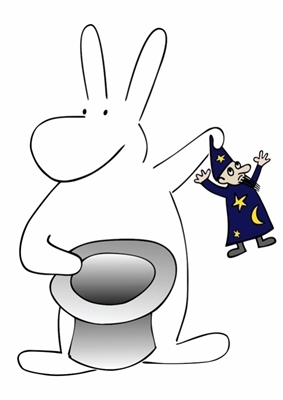On my desk, I have a bobblehead figure of Harry Houdini, the world’s greatest magician and escapologist. It reminds me that every project needs a little magic, and every project manager needs a little bit of “woofle dust” to make obstacles disappear and help launch dates align with the project schedule (even when you’re using a charmed project management software system).
I’m a project manager who’s also mastered a few magic tricks—and thus the comparison. Throughout my career, I’ve been on system launches when it was clear we’d need some reliable tricks up our sleeves to successfully fix a program, or get that last final approval to launch. Sound familiar?
Here are five ways being a project manager is a lot like being a magician.
1. Practice, practice, practice—both magicians and project management professionals need a lot of this.
Magicians spend countless hours in front of a mirror practicing sleight-of-hand tricks and rehearsing their act to make the impossible seem effortless. Top-performing project managers deliver successful projects by honing their own techniques and tricks of the trade. PMs can spend hours tweaking a project schedule, and revising presentations to convey the strongest message. If a project is unsuccessful, it provides feedback on how to improve for the next time around. Even magicians don’t make doves appear without ruffling a few feathers.

2. Magicians and PMs can read minds and predict the future.
Magicians will predict newspaper headlines, reveal the card you’re thinking of and predict future decisions. Project managers are often held to the same expectation as stakeholders expect project managers to see the future, avoid obstacles and always be right.
Now I don’t want to let the rabbit out of the hat, but magicians can’t actually predict the future or else we’d be calling them smart investors and money tycoons. Magicians actually use a variety of tools and subterfuge to make the seemingly impossible . . . possible! Project managers use a different set of tools like ranged estimation, risk management techniques and reliable project management software to help predict future events and adjust tasks accordingly.
3. Magicians and PMs dispel rumors, myths, and concerns by presenting the facts.
In addition to being the greatest escape artist, Houdini spent the later part of his life debunking spiritualists and con-artists who swindled people into thinking their loved ones were contacting them from the Great Beyond. The Amazing Randi did the same by exposing fraudulent psychics and recreating their “miracles” by scientific means.
Project managers do the same by applying logic to project plans and presenting the facts. It might be more convenient to swindle someone into believing a project has no issues or risks, but project managers help identify problems by speaking the truth and making fact-driven decisions.
4. Magicians and PMs put on a great show.
Both a magic act and an executive presentation is a show. Your audience may be a group of executive stakeholders or a group of 10-year-olds at a birthday party, but a crowd’s a crowd. Both types of audiences can be intimidating. A client can ask hard, unexpected questions; fifth-graders are relentless in insisting you show them how a trick is done. Magicians and PMs put a lot of practice and polish into the show.
When magicians rehearse their act, their spoken lines are known as “patter.” For important meetings like funding requests or executive presentations, project managers and the management team will spend a lot of time preparing the right message and practicing their own show. When asked to speak at a department meeting or a local PMI chapter, project managers need to know how to present.
Vaudeville magicians risked jeers and flying fruit from a dissatisfied audience. If you ever sat through a boring project management presentation, then you know people don’t throw fruit (no matter how badly they might want to), but they do vote with their feet.

5. Magicians and PMs manage risks.
Houdini would escape upside down while submerged in a glass water tank locked at his ankles. He would escape from a straightjacket while suspended from a crane 50 feet in the air and even bury himself alive. All of these performances had significant risks associated with them—death usually being the ultimate risk impact. Houdini mitigated all of his risks and would repeat these performances night after night to admiring spectators.
Project managers don’t submerge themselves in fish tanks (or have projects called the Chinese Water Torture Cell), but they do have to manage risks in the face of shifting budgets, baseline dates and project costs.
And this is why, as project management professionals, we all need a little bit of magic from time to time. My Harry Houdini bobblehead serves as a useful reminder that project managers really are magicians!
By the way, if you ever wondered how magicians practice sleight of hand, here is a little insight into the world of magic, illusion, and prestidigitation. (I know, I know—don’t quit your day job, Andy!)
Tell us about a project management magic trick you pull out of your hat to wow the team.
 Schedule a demo of LiquidPlanner with a product expert today
Schedule a demo of LiquidPlanner with a product expert today







